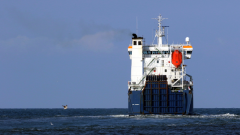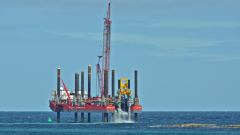Noise
A wide range of marine animals produce and detect sounds, which range from the clicks and grunts produced by some fish and crustaceans, to the complex song of humpback whales or the individually-unique whistles produced by bottlenose dolphins. Many marine species use sound to communicate, find a mate, search for prey, avoid predators and hazards, and to navigate. However there are many other sounds in the sea, produced by natural (e.g. waves, weather) and human (e.g. shipping, construction) sources. When sounds are unwanted or unintentional, especially those made by humans, they are referred to as noise.
International concern increasingly focuses on the potential for underwater noise from human sources to have negative effects on sensitive marine animals, such as marine mammals. This noise has the potential to mask the signals that animals rely on, and in addition it can lead to physiological stress, disturbance or hearing damage. Underwater noise can be categorised into two primary classifications: impulsive and continuous.
Impulsive noise is defined as very short duration pulsed sounds, with a rapid onset and decay. Impulsive noise can originate from underwater explosions (e.g. from clearance of unexploded bombs, or used to deepen harbour basins), seabed (geophysical) surveys using airguns (which are used when searching for oil deposits far below the sea floor), or pile driving, to install structures such as wind turbine foundations into the seabed. The main risks from impulsive noise are hearing damage and disturbance of marine species.
Continuous noise tends to be longer in duration, without the pulsed characteristics of impulsive noise. The main source of continuous underwater noise from human sources is from shipping of all types, including cargo transport, ferries, recreational vessels, and military activity. There are some other less-significant sources of continuous noise, such as drilling for oil, or the sound produced by wind or tidal turbines. The main risk from continuous noise is the masking of natural sounds that some animals depend upon.
The impulsive noise assessment examined data submitted to the Marine Noise Registry between 2015 - 2017, and the continuous noise assessment describes the results of a published study (Merchant et al., 2015) which used data collected in the Scottish North Sea using underwater sound recorders, during the summers of 2013 and 2014. These assessments have used the most recently available data, which does not come from the same time period but which can be considered a baseline for future comparisons.
Assessments
Literature
|
, 2016. Underwater noise levels in UK waters. Scientific Reports, 6(1), p.36942. Available at: https://www.nature.com/articles/srep36942. |



